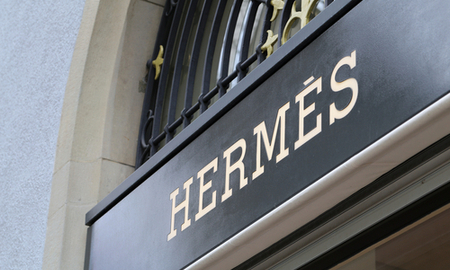Sign up for our free daily newsletter
YOUR PRIVACY - PLEASE READ CAREFULLY DATA PROTECTION STATEMENT
Below we explain how we will communicate with you. We set out how we use your data in our Privacy Policy.
Global City Media, and its associated brands will use the lawful basis of legitimate interests to use
the
contact details you have supplied to contact you regarding our publications, events, training,
reader
research, and other relevant information. We will always give you the option to opt out of our
marketing.
By clicking submit, you confirm that you understand and accept the Terms & Conditions and Privacy Policy
In a bid to raise awareness about cruelty-free luxury goods, artist Mason Rothschild created a limited number of non-fungible tokens (NFT) of the iconic Hermès Birkin bag. However, he redesigned the bags as furry, cruelty-free, virtual alternatives. In response, Hermès said that no permission was sought to use the trade mark and that Rothschild is infringing the Hermès trade mark.
Rothschild has previously made news with the behemoth luxury fashion house when he created the ‘Baby Birkin’ NFT in May 2021. That NFT was described as “an animation in 3D max … soundtracked by a space-age .wav audio file, amplifying this illustration of pregnancy in an enigmatic creation”. It sold for the equivalent of nearly $24,000 in cryptocurrency on the blockchain. At the time, Hermès affirmed that they believed their trade mark was infringed and that they had no affiliation to the Baby Birkin NFT.
MetaBirkins
Rothschild’s latest creation takes aim at the use of animal products in the fashion industry. The limited edition NFTs sold on the online marketplace OpenSea for 200 ethereum, or around $700,000.
In response, Hermès have said that “Hermès did not authorise nor consent to the commercialisation or creation of our Birkin bag by Mason Rothschild in the metaverse,” and that “these NFTs infringe upon the intellectual property and trade mark rights of Hermès and are an example of fake Hermès products in the metaverse”.
What does this mean?
The unauthorised use of trade marks in NFTs poses many problems for brands looking to protect their IP. Some issues to consider include:
- Often the value of the NFT comes from the inclusion of the brand or trade mark, rather than the NFT itself. How do we value NFTs?
- How can brands keep up with this evolving trend. Should they join the market and gain control over the use of their brand by creating and selling their own NFTs (like Gucci) or, do they pursue an aggressive monitoring and enforcement policy?
- There is a real and increasing risk of fake copies of NFTs being produced. Rothschild said he has already seen unauthorised replicas of his MetaBirkin NFT being sold for similar prices to the originals he released. He also said that the blockchain was ‘relentless’ and there was little recourse for consumers who bought fakes.
Brands should be thinking about how they can capitalise on the growing NFT market and how to protect their IP. The law around this issue is nascent and there is little precedent to follow, so it is down to brands to develop the best strategy to protect themselves in this complex digital era.
Rebecca O’Kelly-Gillard is a partner and Chloe Birkett trainee solicitor at Bird & Bird. They can be reached at [email protected] and [email protected].
Email your news and story ideas to: [email protected]



.jpg)


